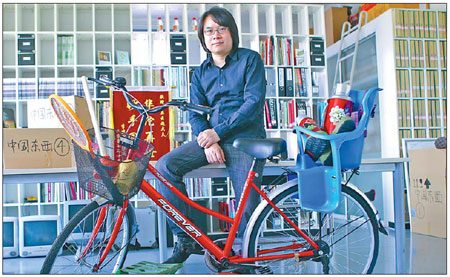Art
Art of the ordinary
Updated: 2011-05-11 08:22
By Liu Yujie (China Daily)
|
Wu Xuefu says he wanted to do something to create an amiable, humane China by presenting plain, ordinary Chinese things to the world. |
 |
Household objects can tell us a lot about society, Liu Yujie discovers.
What are the things that reflect everyday Chinese aesthetics, and how can they influence the world? Believing that each man-made object reflects technological skills and ideological aspects of a society during a certain period, Wu Xuefu, dean of art and design at the Communication University of China's college of advertising, has been seeking the answer for many years.
Wu and his dedicated team have travelled all over China, visiting cities, towns, counties and villages, from the east coastal provinces of Zhejiang and Shandong to the Tibet autonomous region in the west, and from southern Hainan province to the Inner Mongolia autonomous region in the north, looking for the common traits of contemporary Chinese aesthetics.
"We don't just stay in the big cities to do the research because they are not ordinary China. In fact, of the Chinese population of 1.3 billion, 60 percent are farmers and 21 percent are migrant workers. Their living conditions and aesthetic tastes are less influenced by the West and thus reflect more accurately original Chinese cultural traits," Wu said.
 |
As a matter of principle, Wu and his team do not document high-end cultural items such as Peking Opera facial masks and snuff pots, but those very household things that people use every day without giving them much attention. And they are not just recording these things for fun, but are doing serious social anthropological studies.
"We knock on people's doors and ask to take some pictures of household objects," Wu said. "Most people are kind so we do lots of delightful interviews as well."
Today's China, in Wu's eyes, is exporting many products with no added cultural value. As China becomes an economic power, it is high time for this ancient, inventive and creative country to make its cultural voice heard across the world. "We want to do something to create an amiable, humane China by presenting plain, ordinary things to the world, rather than adding to the already overflowing grand narratives that daunt foreigners," Wu said.
With a growing economy, China should take measures to export more cultural values, Wu said. Every Chinese artist and designer with a sense of responsibility to history should delve into domestic things, distil their essence, and spread them to make them flourish in the international arena.
The team's study shows that typical Chinese things have the following five traits: a preference for tradition (peony flower pattern on hot-water bottles), an emphasis on practicality (bicycles with a basket in front and a child's chair at the back), inventive alteration of existing things (Nestle coffee bottles being turned into water bottles popular with taxi drivers), low technological designs (Heat Faster, a kind of electric heating rod), and show-off psychology (houses in the countryside with a strange mixture of architectural styles).
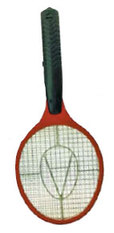 |
"It is so interesting to study these little things in our lives. For example, I believe no other nation will invent a substitute plug to cheat the seat belt warning system in cars," Wu said.
"Cars are designed according to international safety standards, but Chinese people 'cleverly' think of their own way to get rid of that noise. They are so lovely and ridiculous. The inventions say a lot about the nation: our unique wisdom in being highly adaptable, our awareness of safety and our attitude toward life."
Wu found that grassroots aesthetics can be powerful and versatile. They can be state-of-the-art fashion and arts. Japanese artist Takashi Murakami took Japan's innate love for cartoons, and made striking designs for Louis Vuitton handbags and pouches.
"Cartoons are grassroots culture in Japan, but Takashi Murakami integrated them into designs for LV and they were hits worldwide," Wu said. He also appreciates Murakami's strong awareness of the state in his art. He drew a lovely mushroom in the poster for his exhibition Little Boy: The Arts of Japan's Exploding Subculture in New York. ("Little boy" was the name of one of the atomic bombs that the United States dropped on Japan at the end of World War II.)
 |
"Murakami's meaning is very clear: 'the US bombarded Japan with atomic bombs in the past, and now I bombard your country with my lovely cartoon images.'"
Furthermore, Wu thinks contemporary China should learn from what the US did soon after WWII in the cultural field. It successfully made a national artistic hero out of Jackson Pollock, an abstract expressionist painter known for his unique method of dripping paint on the canvas, because his work was against the classical European artistic practices that were still dominant at that time. Pollock's work reflected wild cowboy energy and stood for the American spirit. In Pollock's works Americans found an image of themselves and promoted it to the world, announcing that the nation was no longer a cultural desert. Backed by a strong economy, US cultural values became influential around the world.
Wu said there are also lots of interesting cultural elements in Chinese folk civilization. What an artist with "state awareness" should do is to find these elements and turn them into "salable" products with high a volume of added Chinese cultural values.
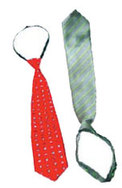 |
A good example is a Louis Vuitton woven bag of red, white and blue that made its debut during 2007 Paris Fashion Week. The bag's material and pattern are similar to bags used by Chinese migrant workers during the Spring Festival migration.
Wu and his team have looked into Chinese houses and faces, and will extend their scope to Chinese offices, streets, images and folklore.
Wu's study of Chinese objects has been published in the book, Chinese Stuff. All the original objects he gathered will be transported to Frankfurt for an exhibition from February to May 2012. Before that, the show will be presented in Beijing for people to take a retrospective journey through their own everyday aesthetics.
Specials
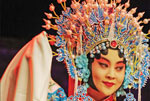
The song dynasty
There are MORE THAN 300 types of Chinese operas but two POPULAR varieties are major standouts

Sino-US Dialogue
China and the US hold the third round of the Strategic and Economic Dialogue from May 9-10 in Washington.
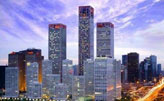
Building communities
American architect John Portman and his company have developed more than 30 projects across China.
